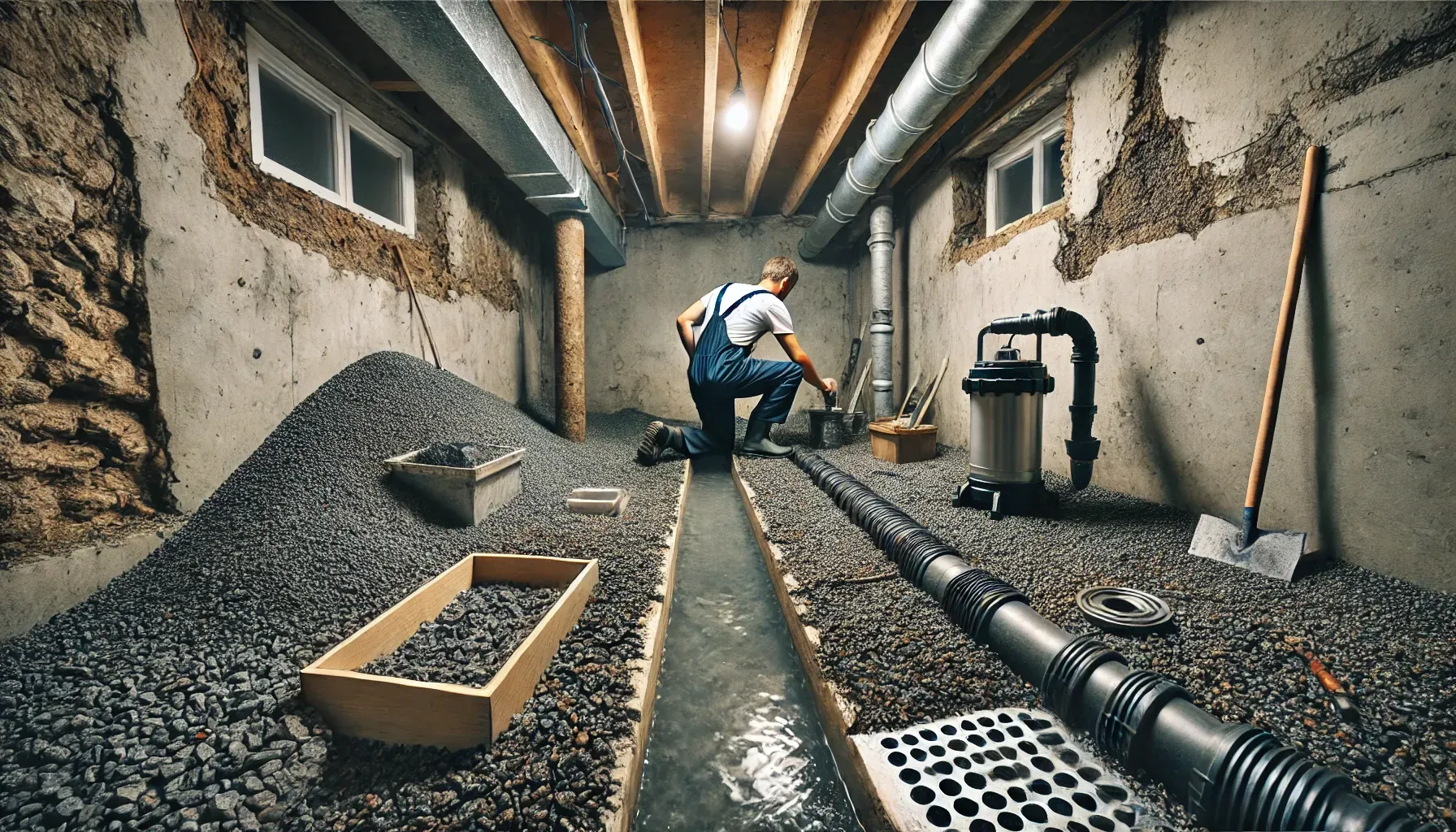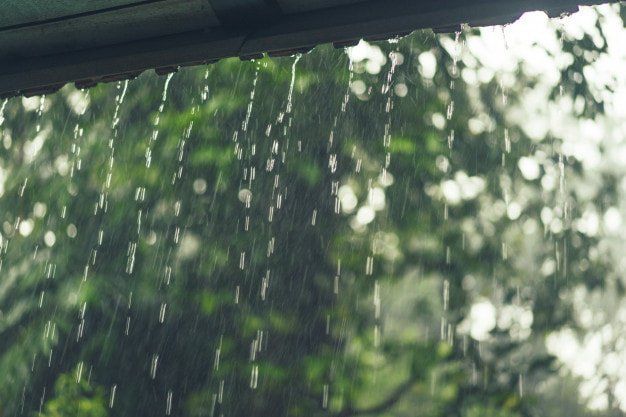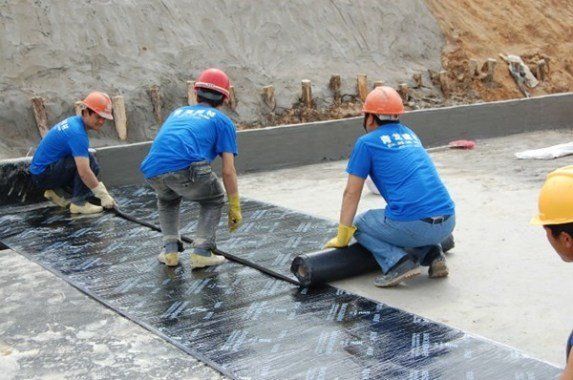Waterproofing -
Washington, DC USA
When Do You Need Waterproofing Services?
Waterproofing is a practice of preventing an artificial construct or material from becoming water-logged or resistant to water penetration. These materials can be utilized in wet, cold or damp environments to various degrees. They are used for building foundations, walls and roofs, as well as vehicles, machinery, appliances, furnishings and personal possessions. It is a crucial process and hence needs to be performed by trained professionals. A wet basement requires extensive waterproofing to prevent the growth of mold, mildew and other allergens.
Basement waterproofing near me Washington DC not only prevents adverse environmental impacts on your building or establishment but also promotes safety for occupants and the infrastructure. Moreover, the aesthetic appeal of a home is also dependent on its ability to withstand adverse weather conditions. Wet basements, for example, should be waterproofed to prevent the growth of mildew, moss, fungi and algae, which could eventually ruin the look of your property. Additionally, waterproofing prevents the occurrence of leaks and subsequent structural damage to the foundation, walls and roofs.
There are two main types of waterproofing methods namely: passive and active. Passive waterproofing
involves the use of materials like grout, cellulose and bitumen to create a seal against liquid penetration. You can employ these materials either as a liquid waterproofing membrane (CFLM) or as a crystalline waterproofing membrane (CPL). A bitumen membrane or a fiberglass-cement membrane is composed of two layers of cementitious materials joined by a thick plastic backing.
Active waterproofing, however, involves excavation of soil and the construction of a sealant or layer of cementitious materials. This layer is then spread over the exterior of the structure. In addition to being used on foundations, this method is also used on roofs, walls, skylights, doors, windows, pool decks, and patio floors. Installing the right kind of waterproofing is essential in order to ensure that the structure is highly resistant to water. In addition to preventing the development of mold, mildew and algae, it also renders the structure more fire-resistant.
Waterproofing residential properties in DC and surrounding areas is often required in areas where there is significant rainfall, high humidity, or even constant exposure to moisture due to septic tank problems, garden irrigation systems, sprinkler systems, or even pools. Most home owners may already have one or several wet areas on their property.
Unfortunately, these wet areas tend to attract vermin and pests like wood-worms and ants, which can cause major damage to the structure. In order to prevent the growth of these unwanted elements, a homeowner should install a solid surface or cementitious layer that acts as an effective home water treatment plant.
Cementitious coatings for these areas are effective at waterproofing these areas from water, but they can also serve as additional protection against corrosion, rusting, and rotting. These coatings will be applied over a base material (such as a solid surfacing or concrete slab) and will be held in place by reinforcing waterproofing materials such as steel mesh, rubber, asphalt, and concrete. The concrete may be poured on top of the base material or it can be left to dry overnight and then repaved into the base material. Once both the concrete and the waterproofing layers are combined, the final product will then be waterproofed.
When you are dealing with a concrete wet area, you need waterproofing services at the best time. Typically, the best time to waterproof a wet area is during the rainy season. However, if you have been experiencing rain regularly, then this may not be enough protection for your home. During these periods, you should consider getting special coatings for your exterior walls, ceilings, and other areas. The different types of coatings will serve to protect your home against the different types of weather that it experiences.
As you can see, there are many different types of waterproofing methods. You need to get the services of professionals who can help you get the best time of the year to perform this task. If you are unsure about when the best time to perform this task is, you can contact a local waterproofing service to get their recommendations. They will be able to give you the best time period to complete the job based upon your specific needs.
Our Process of Waterproofing
At DC Foundation Repair & Waterproofing, we take pride in providing comprehensive and reliable waterproofing solutions to protect your home. Our process is designed to ensure thoroughness, transparency, and efficiency, guaranteeing your satisfaction from the initial visit to the final touches. Here's a detailed overview of our process:
Initial Visit and Inspection
Our process begins with an in-depth home inspection by our experienced team. We assess all potential problem areas, including your basement, crawl space, lawn, and driveway. Our experts are trained to identify early signs of water damage, such as high humidity, masonry cracks, and faulty drainage systems.
Detailed Estimate
Once the inspection is complete, we provide a detailed estimate. This includes the cost of materials and labor, as well as an outline of the recommended waterproofing solutions. We discuss options such as sump pumps, french drains, vapor barriers, and foundation waterproofing to address your specific needs. Our transparent pricing ensures you understand the investment required to protect your home.
Custom Waterproofing Plan
Based on the inspection and estimate, we develop a custom waterproofing plan tailored to your home. This plan may include:
- Basement waterproofing systems and crawl space encapsulation
- Concrete sealing and application of waterproof sealants
- Installation of sump pumps and pump systems
- French drain installation to manage water flow
- Application of waterproof paint and vapor barriers
- Enhancements to plumbing and electrical systems to prevent future issues
Professional Implementation
Our skilled technicians carry out the waterproofing plan with precision and care. We handle all aspects of the project, including any necessary masonry, pressure washing, or drywall repairs. Throughout the process, we maintain open communication, keeping you informed of our progress.
Quality Assurance and Warranty
Upon completion, we conduct a thorough inspection to ensure all work meets our high standards. We stand by the quality of our work with a comprehensive warranty. Our commitment to excellence and customer satisfaction has earned us a strong reputation and positive reviews with the Better Business Bureau.
Ongoing Support and Maintenance
We believe in building long-term relationships with our customers. Our customer service team is always available to address any questions or concerns. We also offer regular maintenance services to ensure your waterproofing system continues to perform effectively.
Restoration and Renovation Services
In addition to waterproofing, we provide restoration services to address any existing water damage. Our team can assist with home improvement projects, including deck repairs, pest control, and real estate enhancements to maintain the integrity and value of your property.
Contact Us Today
For reliable and effective waterproofing solutions, trust DC Foundation Repair & Waterproofing. Whether you need basement waterproofing services, crawl space encapsulation, or building waterproofing, we have the expertise to protect your home. Contact us today to schedule an inspection and receive a personalized waterproofing plan. Check out our blog for more insights and tips on maintaining a dry and safe home.
Frequently Asked Questions About Waterproofing

What is basement waterproofing, and why is it important?
Basement waterproofing involves techniques to prevent water from entering your basement and causing damage. It’s crucial for protecting your foundation, avoiding mold growth, and preserving your home’s structural integrity. Effective waterproofing keeps your basement dry, prevents mold damage, and enhances the overall value of your property.
How does a sump pump help with basement waterproofing?
A sump pump is installed in a pit at the lowest point of your basement. It collects and pumps out excess water that seeps into your basement, preventing flooding. Sump pumps are an essential component of basement and waterproofing systems, ensuring that water doesn’t accumulate and cause damage.
What are French drains, and how do they prevent basement flooding?
French drains are trenches filled with gravel and a perforated pipe designed to redirect water away from your home. These drains prevent water from building up around your foundation, reducing the risk of basement flooding. They are often used in conjunction with other basement waterproofing solutions to provide comprehensive protection.
How do I know if I need basement waterproofing?
Signs you need basement waterproofing include damp or wet walls, musty odors, water stains, visible mold, and pooling water on your basement floor. If you notice these issues, it’s time to contact professional DC contractors for an inspection and solutions like French drains, sump pumps, or sealants.
What is the role of floor drains in waterproofing?
Floor drains are installed in basements and crawl spaces to help remove excess water and prevent flooding. They connect to a drainage system that carries water away from your home. Floor drains work in tandem with other waterproofing measures like sump pumps to ensure water doesn’t collect in your basement or crawl space.
How does mold damage occur, and what can I do about it?
Mold damage occurs when moisture builds up in damp areas like basements or crawl spaces. Mold can damage your property and affect indoor air quality, leading to health issues. Mold removal and mold remediation involve eliminating mold and addressing the source of moisture to prevent future growth.
How does mold testing work?
Mold testing involves taking air or surface samples to determine the presence and type of mold in your home. This process helps assess the extent of mold damage and guides mold remediation efforts. Professional Washington DC contractors can test for mold and provide a tailored plan for removal and prevention.
What is the difference between mold removal and mold remediation?
Mold removal refers to the physical process of eliminating mold from a surface, while mold remediation includes mold removal and addressing the underlying causes of mold growth, such as water leaks or poor ventilation. Mold remediation ensures that mold won’t return by tackling both the symptom and the cause.
Why is crawl space waterproofing important?
Crawl space waterproofing prevents moisture from accumulating in areas beneath your home. Unprotected crawl spaces can develop mold, wood rot, and structural issues. Sealing the crawl space, improving drainage, and adding a vapor barrier are effective waterproofing techniques that keep moisture out and protect your home’s foundation.
Can waterproofing prevent mold growth?
Yes, waterproofing your basement and crawl space can prevent mold growth by eliminating excess moisture. When water doesn’t enter your home, it’s much harder for mold to thrive. A comprehensive waterproofing system that includes floor drains, sump pumps, and moisture barriers is key to long-term mold prevention.
How much does basement waterproofing cost?
The cost of basement waterproofing varies depending on the extent of the work required, the size of your basement, and the type of system installed. Basic solutions like crack sealing can cost a few hundred dollars, while more extensive measures, like installing French drains and sump pumps, can range from $2,000 to $10,000 or more. Professional Washington DC contractors can provide a detailed estimate based on your needs.
How long does basement waterproofing last?
When done correctly by experienced DC contractors, basement waterproofing solutions can last decades. Systems like French drains and sump pumps require periodic maintenance, but the overall protection they offer is long-lasting, ensuring your basement stays dry and mold-free.
What are the signs of mold in my basement or crawl space?
Signs of mold include:
- A musty or damp odor
- Visible mold growth on walls, floors, or ceilings
- Discoloration or water stains
- Respiratory issues or allergic reactions
If you notice any of these signs, contact a mold testing and remediation service right away to assess and resolve the issue.
What is the installation process for sump pumps?
A sump pump installation involves digging a pit at the lowest point in your basement or crawl space. The pump is then placed in the pit, and drainage pipes are connected to direct water away from your home. Once water enters the pit, the sump pump automatically activates and pumps the water outside, preventing flooding.
Can waterproofing help with foundation repair?
Yes, waterproofing can play a vital role in foundation repair. By keeping water away from your home’s foundation, you reduce the pressure and moisture that can lead to cracks and shifting. Basement and waterproofing solutions, like French drains and proper drainage systems, help protect the integrity of your foundation and prevent costly repairs in the future.

“We thought we needed to install a completely new foundation, but they had some really great other options that were far more affordable and just as durable. We are so happy we called them for help.” – KJ Tomms
Jessica M.

“After seeing them repair our neighbor’s foundation, we decided to give them a call and they handled our work just as well as we expected and we highly recommend them to everyone.” – Sarah U.
Nicole L.

“They are the first and only call we make when we are seeking third party data that is impartial and accurate. They’ve helped us make sound decisions in our construction practices.” – Joey T.
George P.
Waterproofing Your Home - Washington, DC USA
Our basement waterproofing contractors in DC can give you an accurate estimate of how much money it will cost to waterproof your basement, kitchen or home office. The initial expense for waterproofing may not be as much as you think, especially if you are waterproofing your basement for the first time. In addition to having the system installed by a professional contractor, the waterproofing process itself is generally quick and easy. Most basement waterproofing costs are in line with what would be needed to replace interior and exterior walls in a typical situation.
There are various reasons for basement seepage, water leaks, leaky pipes, and excess moisture - some of them are easy to remedy and others require assistance from a skilled professional who also specializes in interior waterproofing. An effective interior waterproofing solution can keep mold, microbial, and structural problems associated with basement moisture from occurring. The majority of interior waterproofing solutions are applied by using a specially-formulated membrane that is applied over the exterior concrete and drains. This membrane is effective at preventing water from seeping into the interior, but it also prevents surface water from draining away from the foundation.
A waterproofing membrane is an effective solution for any area that is below grade, including crawlspaces, bathrooms, laundry rooms, garages, storage facilities, and kitchens. Exterior waterproofing is generally less expensive than interior waterproofing because exterior waterproofing is accomplished by placing a membrane on the exterior wall and bottom drain, or footer drain tile. A footer drain tile is a drain tile that connects to the main sewer main pipe. Both systems serve to remove excess moisture from living spaces and prevent it from entering the basement.
A waterproofing system should be inspected on a regular basis to make sure that it is performing to standards. There are two types of waterproofing systems: exterior waterproofing and basement waterproofing. Exterior waterproofing is accomplished by installing a waterproofing membrane on the outside wall, footer drain tile, or both. Basement waterproofing is achieved by installing a drain tile, a waterproof sheet, or a water-repellant foam under the existing floor drain tiles. These waterproofing systems are often combined with drain tile installation in order to create a more effective waterproofing system.
Some of the most common causes of basement moisture are drainage problems and foundation leaks. These cause water to enter through porous materials such as concrete, which makes it easier for water to move. Poorly maintained drainage systems allow excess water to pool around the house and damage the surrounding structure. Other causes of basement moisture include plant roots growing underneath the soil, clay soil causing increased permeability, tree root rot, and poorly-maintained irrigation systems.
If there are any damp areas inside the house, exterior waterproofing will help stop water from moving into these areas. Exterior waterproofing is accomplished by placing an exterior waterproofing membrane on the outside wall, footers, or both. Basement waterproofing can also be achieved by placing drains in strategic locations around the foundation. A waterproofing agent can be applied directly to the walls to prevent moisture from penetrating the interior of the house. These agents are available in liquid, powder, or granular forms and are designed for use in only one-foot gaps.
Excavation is another key process necessary for waterproofing a basement. Excavation is the process of removing layers of soil surrounding the foundation in preparation for waterproofing the structure. Excavation is done by using hydraulic excavators, high-pressurized equipment, skid machinery, backhoes, or bulldozers. The exterior of the home, including the foundation and interior walls, must be waterproofed before any landscaping or sub-floor installation can occur. Most homeowners hire our professionals to complete this process.
After the structure has been excavated for waterproofing purposes, the soil surrounding the foundation and interior walls must be dried. Once the soil is dry, waterproofing methods are used to repair any water damages. Interior waterproofing methods include spraying foam onto basement walls, footers, ceilings, and windows. Duct sealing is also a popular method of waterproofing interior walls. This method seals the air leaks in the walls and helps prevent water from seeping inside the home.



